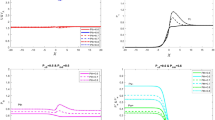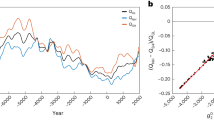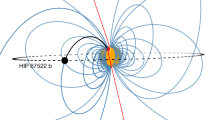Abstract
THE primary cosmic ray intensity at the Earth shows characteristic variations in time which are related to solar and geomagnetic activity. This relationship exists partly because of the modulation of the galactic cosmic ray flux by interplanetary magnetic and electric fields and partly because of the acceleration of particles to cosmic ray energies on or near the Sun. The eleven-year variation, the sharp drop in intensity associated with great magnetic storms, the quasi-periodic 27-day variation and the solar daily variation appear to belong to the former category. The occasional very large, and more frequent small increases in intensity, associated with solar flares are due to local production of high-energy particles. Detailed study of these variations in intensity has led to the development of several alternative models of the interplanetary magnetic field.
This is a preview of subscription content, access via your institution
Access options
Subscribe to this journal
Receive 51 print issues and online access
$199.00 per year
only $3.90 per issue
Buy this article
- Purchase on SpringerLink
- Instant access to full article PDF
Prices may be subject to local taxes which are calculated during checkout
Similar content being viewed by others
References
Elliot, H., Phil. Mag. (in the press).
Parker, E. N., Phys. Rev., 110, 1445 (1958).
Beiser, A., J. Geophys. Res., 63, 1 (1958).
Author information
Authors and Affiliations
Rights and permissions
About this article
Cite this article
ELLIOT, H. Cosmic Ray Intensity in Interplanetary Space. Nature 186, 299–300 (1960). https://doi.org/10.1038/186299b0
Issue date:
DOI: https://doi.org/10.1038/186299b0



